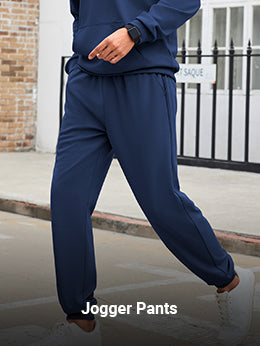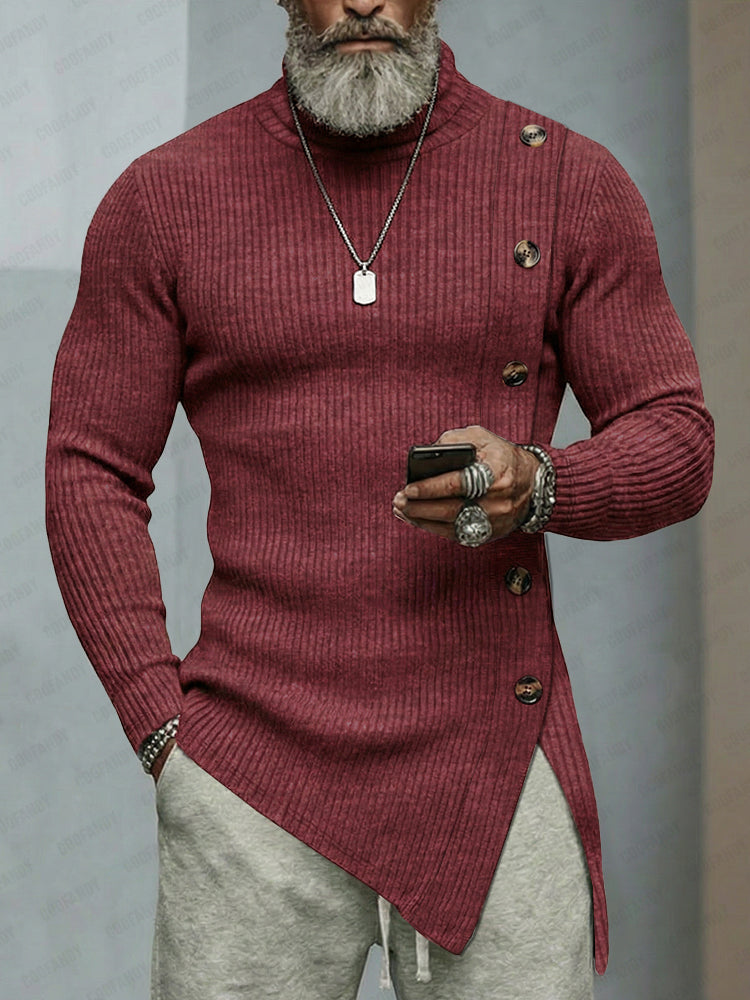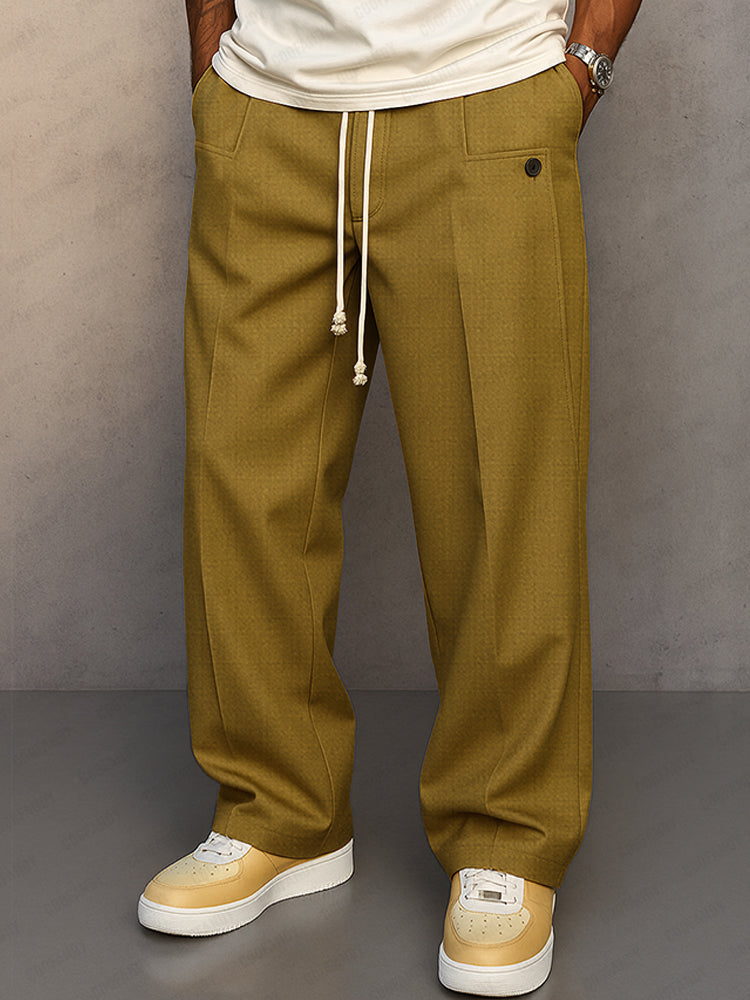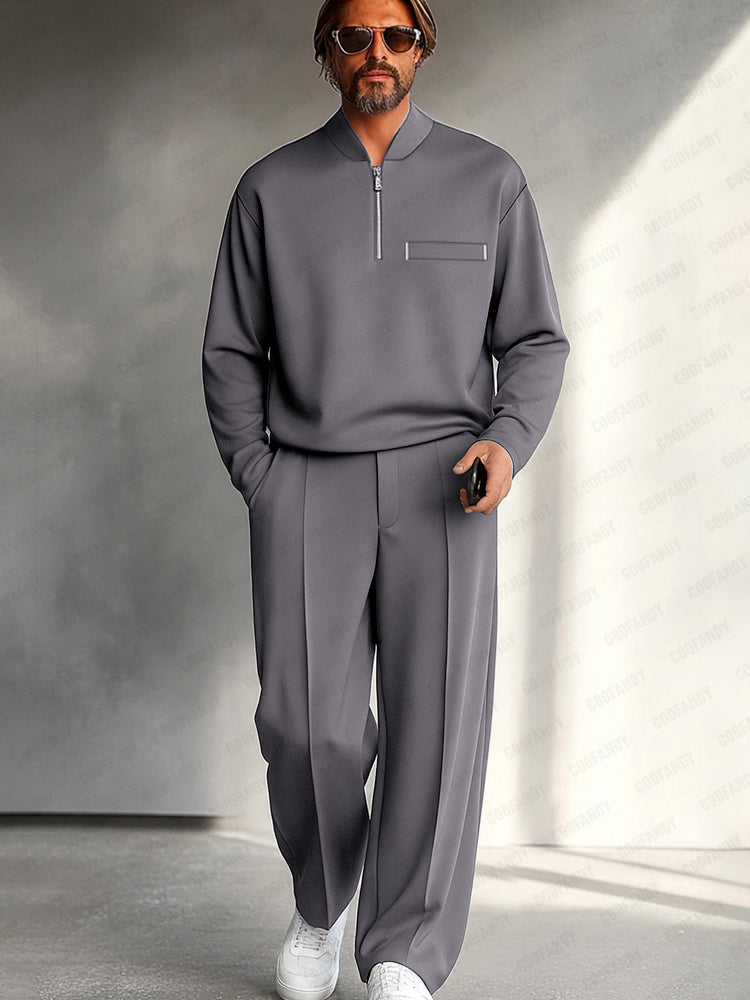How to Measure Men's Pants
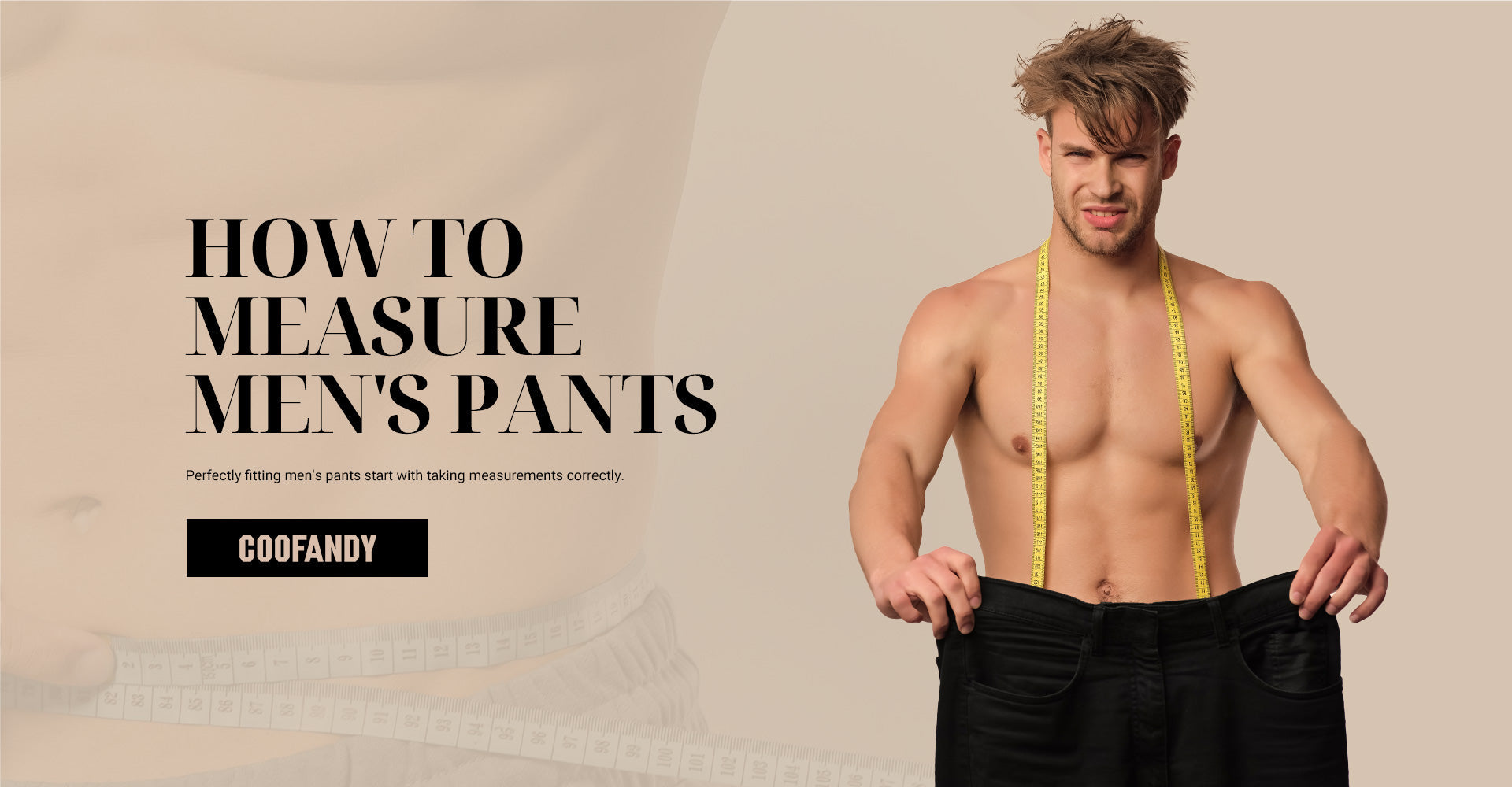
Perfectly fitting men's pants start with taking measurements correctly. Guessing can result in poor comfort and a waste of your hard-earned money. In this article, we will discuss how to measure men's pants.
You'll master the art of measurements, including the waist, inseam, and rise. You only need a measuring tape and a couple of minutes for each. Let's dive in.
What Tools Do You Need to Measure Men's Pants?
The key to measuring men's pants is having the right tools. You get exact results every time with just a few essential tools.
-
Soft tailor's measuring tape (60-120 1in/1.5-3m) for waist, inseam, and rise.
-
Retractable sewing tape with a crotch piece to make reading in-seam easier.
-
Transparent ruler (12–18in/30–45cm) for measuring straight hems and leg openings.
-
Seam gauge or Hem gauge for measuring the depth of hems.
-
Pen and paper (or digital note-taking) to write down measurements.

How to Measure the Waist of Men's Pants?
Use an accurate waist measurement for men to achieve the best fit and avoid disappointment. Follow these simple steps:
-
Lay the pants flat, buttoned and zipped up, so you get symmetry.
-
Press out any wrinkles from the front so it lines up perfectly with the rear waistband.
-
Stretch one end of the flexible tape straight across at the waistband edge.
-
Take the measurement from side to side, which is half of the waist circumference.
-
Double this measurement to determine the full waist circumference (e.g., 16″ flat = 32″ waist).
-
Measure the rise you wear, and the waist placement affects fit.
-
Don't stretch the tape too tightly; it should be lapping and snug, with room to slip one finger beneath it.
-
Repeat twice and average for consistency.

How to Measure the Inseam of Men's Pants
Proper inseam measurements are key to a great-fitting pair of pants. Steps to measure the inseam:
-
Lay the pants flat on a table with a good fit, legs out, and waistband buttoned up.
-
Put the end of a flexible measuring tape at that crotch seam, where the two legs meet.
-
Stretch your tape measure inside leg from crotch to bottom of hem.
-
Note the length in inches. This is your inseam measurement.
-
If necessary, measure again for accuracy.

How to Measure the Hip and Thigh Areas
Hip and thigh measurements are important to find out if a pair of trousers will fit comfortably. These measurements give an idea of the overall shape and mobility. Here's how to measure hip and thigh:
-
Hip measurement: Stand with your feet together. Wrap the measuring tape around the fullest part of your hips and rear, keeping the tape parallel to the ground but not causing skin indentations. This is your hip measurement.
-
Thigh measurement: Stand with feet slightly apart. Wrap the measuring tape around the fullest part of your thigh, 1-2 inches below the crotch. Make sure the tape is level around your body and a little slack. This is your thigh measurement.

How to Measure the Rise and Leg Opening
Understanding the rise and leg opening of men's pants is a must for obtaining a proper fit. These measurements will help determine how pants sit on your body and how they taper down the leg.
Steps to Measure the Rise:
-
Place the pants onto a flat surface, with the waistband buttoned and the zipper zipped.
-
For the front rise, measure from the crotch seam straight upward to the top of the front waistband.
-
For the back you are measuring, measure from the crotch seam straight up to the top of the back waistband reinforcement.
-
Note both measurements, as they may not match up; the front rise is often shorter than the back rise.
Steps to Measure the Leg Opening:
-
Spread the pants out flat with the legs open.
-
Measure straight across the bottom hem of one leg.
-
This is half the circumference of the leg opening. Double this to get the full circumference of the leg opening.
-
Do the same for the other leg for uniformity.

Do You Measure All Styles of Men's Pants the Same Way?
Men's pants are not all measured the same size. Various styles, such as men's shorts, straight, or relaxed fit, feature different cuts. While base measurements remain the same, certain styles will garner additional focus on areas such as width over the thigh or the leg opening, to craft a fitting that is best suited to that style.
Common Mistakes to Avoid When Measuring Men's Pants
It's hard to measure men's pants. To produce the most accurate results and the best fit, avoid these common mistakes.
Using the Wrong Measuring Tools
Incorrect measurements may be returned if using a stiff or too-short tape. And when determining your size, use a flexible tailor's tape measure, which easily bends around curves without causing any creasing.
Measuring Over-Thick Clothing
The scratchy, bulky clothes you're wearing when you measure your pants add extra inches. Please always measure on bare skin for the most accurate waist, hip, and thigh measurements.
Not Lying Pants Flat Properly
Pants with wrinkles or folds cause inaccurate measurements. Please lay the pants flat on a smooth surface in order to get the actual measurements of waist, inseam, thigh, and hip.
Pulling the Tape Too Tight or Loose
The tape should be taut but not too tight. Overextending the loop compresses fabric and results in smaller measurements, while a loose loop results in larger measurements.
Ignoring Style Differences
In all styles of pants, the fit may differ. However, not taking style variations such as rise or leg tapering into consideration might lead to inaccurate measurements and a poor fit.
Every Great Fit Starts with a Good Measure.
When you measure men's pants properly, it's easier to get a good fit. It's a time-saver, a money-saver, and a frustration-saver. Simply follow the procedures, have proper tools, and double-check the results. Whether shopping or tailoring, these tips will help you find pants that fit and feel great, too. Similarly, it's easier to find comfortable and well-fitting clothes when you measure other men's clothing correctly.
Related reading:





